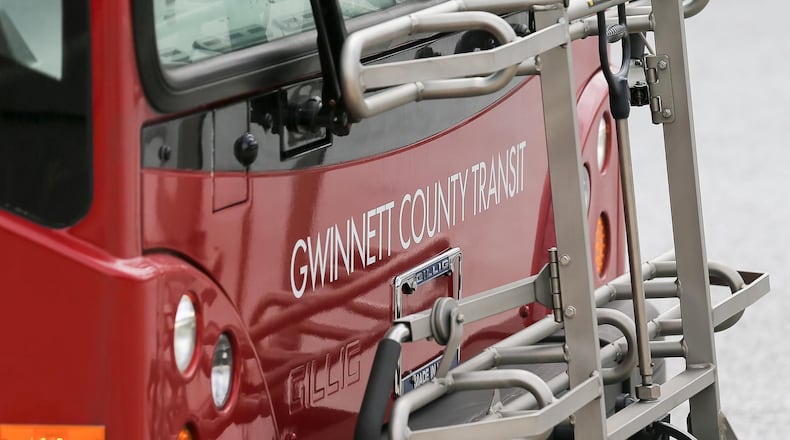On Tuesday night — exactly a week since the fate of Gwinnett's failed MARTA referendum was sealed — county commissioners voted to pursue funding that would allow them to take a deeper look at one local corridor targeted for mass transit improvements.
It marks the first tangible, transit-related action since Commission Chairman Charlotte Nash's vow that the issue would not die along with the referendum. And as Gwinnett reasseses what may be involved in its transit future, the study could also create a model for how the county plans other significant projects.
”The work done on this corridor can serve as a pilot project for evaluating other transportation corridors in Gwinnett,” Nash said.
The five-member Gwinnett commission voted unanimously Tuesday to pursue a grant from the Atlanta Regional Commission's Livable Centers Initiative. The grant would help cover the cost of a $800,000 study of the 12-mile corridor along Brook Hollow Parkway and Satellite Boulevard between the Norcross and Duluth areas, where county leaders have envisioned building a high-capacity bus rapid transit line.
So-called BRT is often likened to “light rail on rubber tires” and generally operates in dedicated lanes, making it much quicker and more reliable than traditional bus service. The BRT line between Jimmy Carter Boulevard and the Sugarloaf area was one of several included in the county transit plan that would’ve guided future projects built by Gwinnett and MARTA had last week’s vote passed instead of being rejected by an eight-point margin.
The study — which would be funded with $400,000 from the ARC, $325,000 from Gwinnett County and a total of $75,000 from three local community improvement districts — would be aimed at exploring current land use and potential obstacles for BRT in the corridor.
It would also be geared toward developing a set of policies and design guidelines to encourage development around future transit projects.
“The work done in looking at this specific corridor can help inform planning and decision making for all corridors where BRT may be considered,” Nash said. “In addition, the dedicated space set aside for BRT could be used for other technologies over time. Thus the results of the study can be useful in looking at use of the space, not just BRT.”
To be clear, the BRT line or any other significant mass transit project is unlikely to happen without a dedicated funding stream like the 1 percent sales tax that would’ve been enacted had the referendum passed. But Nash has made no secret of her plans to call another referendum, which would likely include the same sales tax, sometime in the coming years.
The features and modes included in the transit plan, which included a heavy rail extension from Doraville to Norcross in addition to the BRT lines and other dramatic expansions of bus service, could be changed between now and then.
Before and after last week’s special election, Nash and other officials heard plenty from voters and advocates on both sides of the issue. Some called rail a waste of money; others called for more of it.
In the days after the vote, U.S. Rep. Rob Woodall, R-Lawrenceville, told local media that heavy rail would’ve been a tough sell for federal funding because of its inflexibility and lengthy construction time.
The county had projected that federal funding would cover about 45 percent of the $1.15 billion capital project. County officials maintain that that was a conservative approach.
“If there is one thing I have learned in the last four decades,” Nash said, “it is to focus on what is really needed here at the local level, identify a number of options to address those needs, and be ready to take advantage of opportunities for federal funding as they develop.”
What’s next for Gwinnett transit
Gwinnett Commission Chair Charlotte Nash has said she hopes to call another transit referendum in the coming years. But there’s work to do before then.
Because the new Atlanta-region Transit Link board was not formed until January, the Gwinnett transit plan and the county’s pending contract with MARTA (both of which were adopted last year) were considered existing arrangements. That meant they didn’t need prior approval from the ATL.
That’s no longer true. Future projects would have to be chosen from the regional oversight body’s larger plan.
While Gwinnett can certainly submit its own plans for inclusion by the ATL board (of which Commission Chair Charlotte Nash is a member), it’s no longer a guarantee that everything Gwinnett leaders choose to pursue would be accepted and added to that list.
The county would also have to choose who its service provider — or providers — would be.
Under legislation passed last year, MARTA is the sole operator of heavy rail in the region and would be involved by default if Gwinnett chooses to include that option in any future plans. But the county could use other entitities, including itself, to operate other transit solutions.
About the Author
Keep Reading
The Latest
Featured


